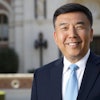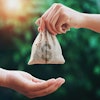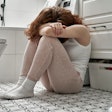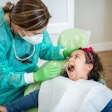
A team of researchers from seven U.S. dental schools is calling for quick and creative solutions to address the growing scarcity of full-time faculty members within the nation's dental school programs (Journal of Dental Education, January 2011, Vol. 75:1, pp. 82-89).
Their report cites widening pay gaps between private practice dentists and clinical professors at dental schools as one factor in fewer dentists committing to careers in teaching. Clinical faculty also report being overwhelmed and burned out by the workload demands of teaching, clinical, research, and administrative responsibilities.
The authors call for the development of mandatory mentoring programs, among other recommendations, to help reverse the trend.
"We feel it is essential that mentoring programs be considered mandatory within dental schools if this trend toward a major crisis in dentistry is to be reversed as rapidly as possible," said Vanchit John, DDS, MSD, chairman of the Indiana University School of Dentistry Department of Periodontics and Allied Dental Programs and lead author of the report, in a press release. "Clinical faculty shortages could be characterized as the most critical challenge confronting dentistry."
Citing an average of almost seven faculty vacancies per dental school and an average pay gap between general practice dentists and clinical faculty of $86,000 a year, the report offers a comprehensive outline for restoring teaching numbers. Among the authors' proposals are:
- Improved faculty compensation
- New loan and tuition repayment and waiver programs
- Junior faculty development scholarships
- More flexibility for clinical faculty to have time for private practices
"We're calling it the 'Growing Our Own' plan," Dr. John said. "And the concept of growing our own faculty and developing mentoring programs should serve as cornerstones to help resolve shortages."
If dental school administrators were to develop in-school programs that identify students and specialty residents interested in the idea of teaching as a career, then knowledge about those opportunities would increase, the report authors noted. Recent data show only 25% of current dental faculty was aware that a mentoring program was available at their school, and 35% said they had never received any mentoring themselves, they added. Within dental faculty that did receive mentoring, 25% said they were dissatisfied with the experience.
The report recommends that dental schools commit to seven specific steps for developing successful mentoring programs:
- Provide adequate faculty time for mentoring.
- Choose and assign appropriate mentor-mentee teams.
- Require regular meetings and follow-ups among the teams and the administration.
- Involve department chairs in the process.
- Develop long-range goals for the mentee.
- Provide feedback and advice regularly to the teams from senior faculty and administration.
- Consider development of cross-disciplinary mentoring teams on university campuses.
While mentoring should serve as the cornerstone for reversing the trend of faculty shortages, those programs alone won't address all the problems pointed out in the report, Dr. John noted. Individual institutional and national programs should also be developed with goals of improving faculty compensation, allowing increases in practice time for clinicians, and allowing clinicians more freedom for consulting and lecturing opportunities.
Copyright © 2011 DrBicuspid.com



















